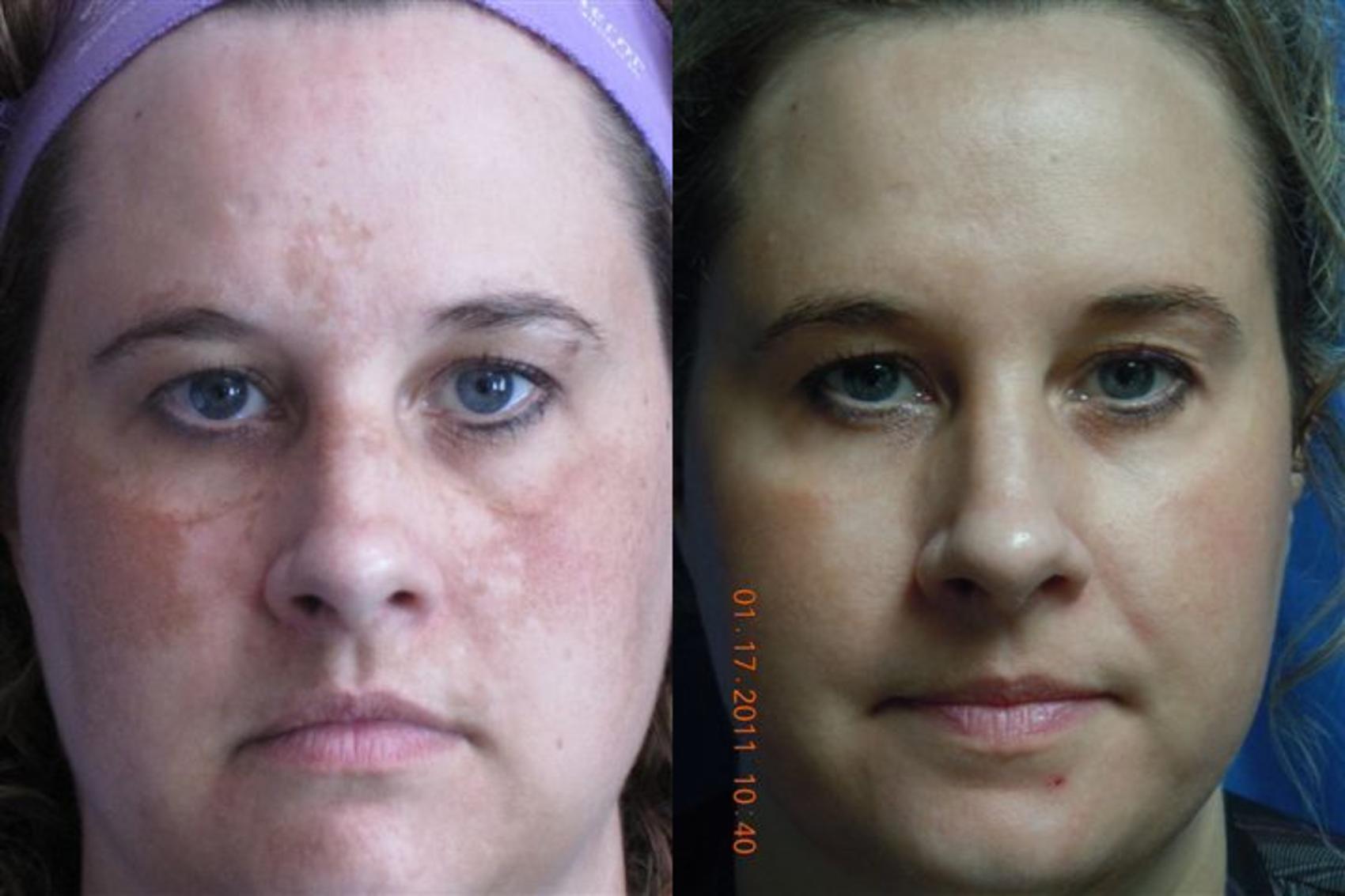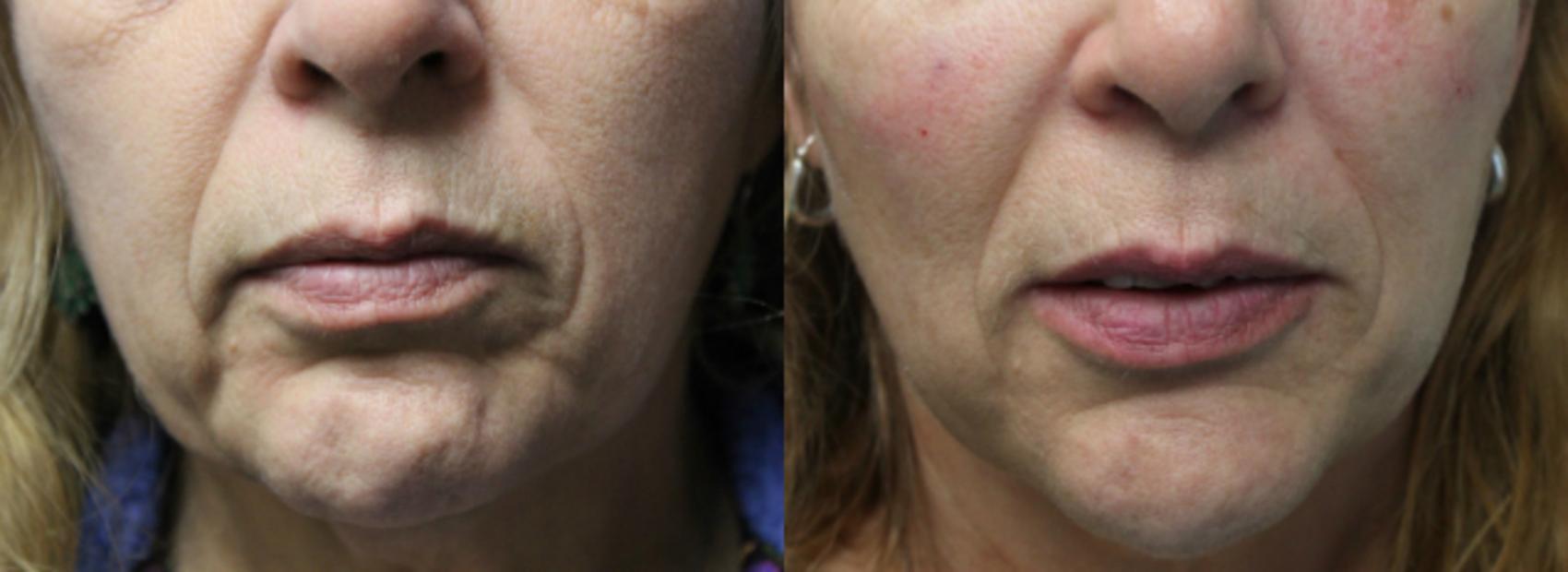Why does someone look older? What makes one person look older than another? We all look at our own faces in the mirror every day; sometimes we suddenly wake up one morning and notice things have changed.
We look at each other and compare ourselves to one another. “She really looks good.” “Life has really taken its toll.” What are the subtle changes that make one person look older and another look fresh and healthy and young?
There are four main areas where the face changes with age. Taking a medical spa approach to facial rejuvenation, all four can be addressed with noninvasive or minimally invasive cosmetic treatments and procedures.
1. Skin Tone
Freckles, brown spots and inconsistent pigment, as well as redness and vascularity, all contribute to the appearance of the skin. Time and exposure to the elements contribute to these imperfections. The skin tries to protect and repair itself, and the result is browns and reds.
How to treat it: A combination of skin care, photofacial IPL treatments, and a variety of lasers, including PicoSure™ Focus and fractionated CO2 laser treatments. You can learn more about the benefits of PicoSure in a related blog post.
2. Texture
Fine lines, wrinkles, scars, stretch marks, enlarged pores, and acne scarring are examples of textural skin changes that contribute to a ‘’weathered” appearance. Trauma, infections, and the loss of collagen and elastin in the skin from aging are the causative factors that make our skin less than smooth.
We have the ability to stimulate the body to build new collagen and elastin by creating a very precise type of injury to the skin, which turns on the reparative process and stimulates collagen and elastin at a cellular level.
How to treat it: Laser, radiofrequency, and ultrasound devices that force the skin to build new collagen with a specific type and placement of heat. You can see this in the patient pictured below, who received a CO2 laser treatment for crow’s feet.
Active wrinkles are another issue. They are caused by muscular contractions and creasing of the skin. Certain areas, such as the glabellar frown lines between the brows and crow’s feet lateral to the eyes, can be treated by relaxing the muscles with neuromodulators such as Dysport® (which is what we like to use at our practice) and XEOMIN®.
3. Tautness
Skin laxity is a telltale sign of looking older, and factors at play are similar to what we see above with textural changes. Collagen and elastin volume in the skin gradually starts to decline in the mid-20s; the rate of loss depends on each person’s health, overall skin care, sun exposure (mitigated by the use of sunscreen) and smoking. The chemicals in smoke prevent the skin’s ability to heal itself when exposed, giving way to poor texture and laxity.
How to treat it: Depending on the severity of the laxity, we have various tools in the skin-tightening toolbox. Laser energy is often a very effective modality and is the most often used.
- Superficial energy such as PicoSure Focus treatments or SmartSkin™ fractionated CO2 are able to penetrate deep enough to cause collagen contraction and remodeling.
- Other treatments such as Ultherapy® use focused ultrasound to heat and contract tissues.
- Minimally invasive surgical procedures using laser fibers under the skin, such as PrecisionTx™, work by heating the skin and subcutaneous network from below the surface to tighten loose skin.
- Skin can be removed and tightened through surgical intervention in a neck lift or facelift.
Microneedling can also improve skin laxity.
4. Volume
Lastly, and probably the least appreciated aging factor, volume changes take place in everyone as the face and neck age.
Losing Volume Where We Want It
Not only does the skin become thinner, but the underlying support structures of the face and neck diminish. The bones become thinner, the muscles atrophy, and the fat pockets that give our face contour and 3-dimensional projection evanesce.
Gaining Volume Where We Don’t Want It
We also have some volume increases under the chin and along the jawline, creating jowls and double chins. So, understanding these volume changes and addressing them specifically and accurately is one of the most important anti-aging treatments that we provide.
How to treat it: Injectable fillers replace lost volume in areas such as the:
- Temples
- Tear troughs (addressing the dark circles under the eyes)
- Cheeks
- Lips and vertical lip lines
- Oral commissures (the downturned corners of the mouth)
- Marionette lines (extending from the corners to the chin)
- Jawline
Fillers are sterile, soft, injectable cohesive gels that are injected into areas of volume loss. They plump the area, returning the tissue back to its original volume. The goal is not to look over-filled and “Hollywood” but just a younger version of you.
What Types of Dermal Fillers Are Available?
We use Galderma hyaluronic acid (HA) fillers, such as Restylane®, Restylane Silk, Restylane Lyft, Restylane Defyne, and Restylane Refyne. Other alternatives include BELOTERO®, RADIESSE®, ArteFill®. These fillers last anywhere from 6 to 18 months.
There’s also Sculptra®, a unique formulation used as a biostimulator to help you build your own tissue. For its ability to accelerate collagen growth, we call Sculptra “fertilizer for your face.” The volumizing and rejuvenation of the skin we see with Sculptra are fantastic, and it’s a great tool for some of our patients. Sculptra lasts for 2 or 3 years and may take several treatment sessions for the best results.
Comprehensive Facial Rejuvenation
A combination of some or all of these above treatments for tone, texture, tautness, and volume loss represents the latest innovations in treating the aging face and neck. Will facelifts be obsolete in the future? It appears that they just might.
Getting Started
We all continue to have birthdays as time marches on … but we can also continue to look young, fresh and healthy. If you’re ready to get started on creating fresher, more vibrant-looking skin, use our online form to request a consultation or call us at (208) 676-8346.











Leave a Reply